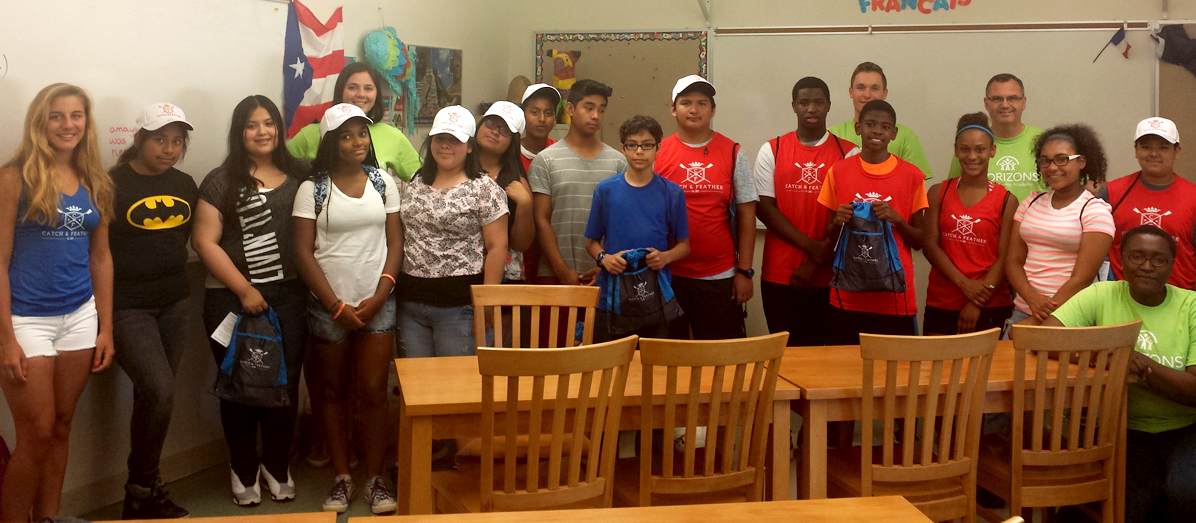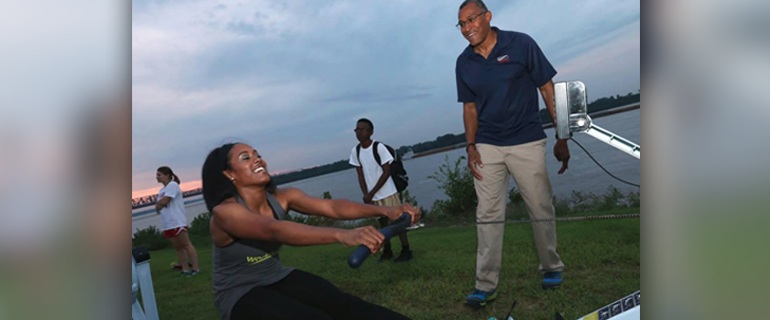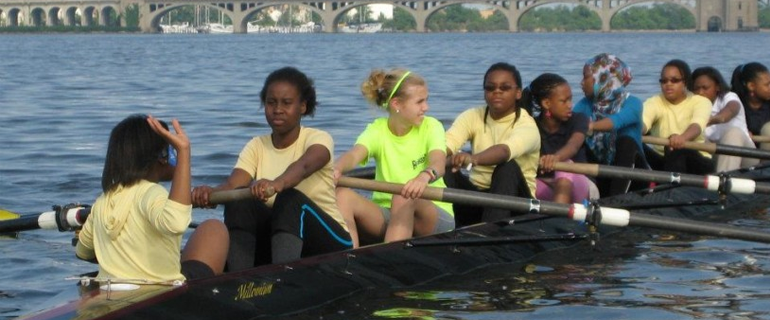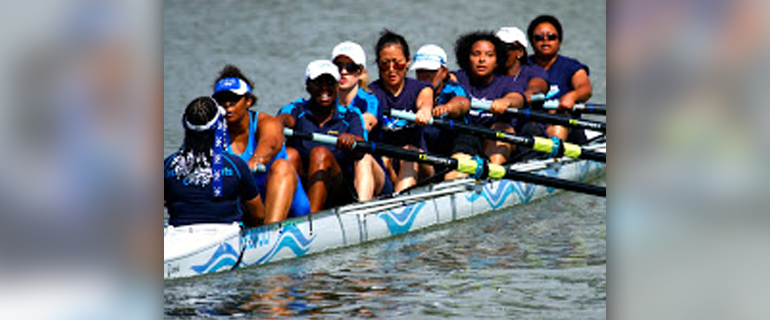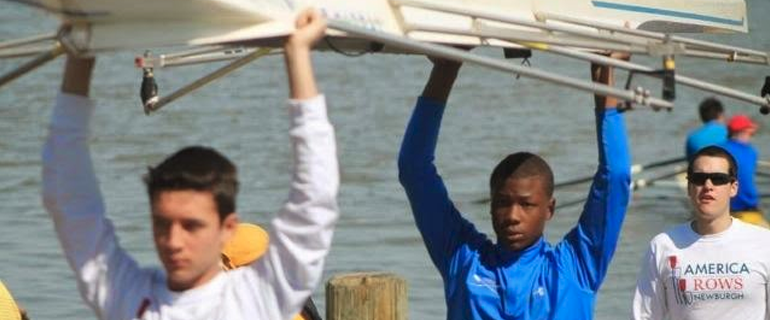USRowing’s America Rows program diversifies rowing across the country
When USRowing hired Richard Butler in 2010, they gave him a single directive: figure out how a 135 year-old organization could become more diverse, and why it was not. Five years ago, the membership of USRowing was 98.7% white. Today, thanks to US Rowing’s America Rows program, the boat is a lot more diverse than it was back then, and everyone is happier for it.
You can hear the passion in Richard’s voice when he speaks of breaking down barriers in a centuries old sport.
You can hear the passion in Richard’s voice when he speaks of breaking down barriers in a centuries old sport. When he talks about the barriers that minority students face, you can’t help but catch on to the sense of justice that he is bringing to the sport. “I realized that there were a couple of barriers to entry of why people of racial disparities were not interested in rowing. One is that it’s not affordable. Although we don’t have to purchase boats as individuals, it costs an individual an average of $600-1300 per season to row.”
Richard points out that nearly 60% of African American children cannot swim. Most rowers grew up jumping off docks or swimming at their local pool and can’t imagine that it would be like to not have this basic skill. “If you can’t swim, you can’t row. That’s our rules. So we needed to address that barrier,” Richard said. By offering swim lessons to new rowers, the sport is becoming not only more equitable for all, but teaching non-swimmers a life skill that they will value for life and pass on to their families.
A third barrier was the age at which most children begin a sport. At the time, rowing was not typically offered as an intramural sport for elementary and middle schoolers. By the time students reached high school, and were eligible to row, they had either committed to another sport or did not see themselves as athletes. “We immediately recognized that we needed to go after kids who weren’t already playing sports,” Richard said. “Our philosophy became to reach out to kids who don’t identify as athletes, and introduce them to rowing.”
Bringing ergs to middle schools was a transformative move for America Rows. “Despite addressing barriers like cost and ability to swim, we still weren’t reaching everyone. It’s like an iceberg melting…we knew it was melting, but it’s such a slow pace that nobody notices. I wasn’t satisfied with the speed, so the “middle school” obstacle was a big one. We came up with putting ergs in the middle schools.”
As a result, America Rows began visiting middle schools around the country, bringing ten ergs to middle school gyms full of kids who had never seen one of these machines before. The first visit was to the Los Angeles school district, to an all-female middle school with a significant Hispanic population. Many of the girls did not know how to swim and would not be able to afford to row, and had certainly never seen an erg before.
“If you have never been exposed to rowing, no one is good….
it’s a fair, level playing field.”
The machine’s novelty excited them, and since everyone was a novice, the sport did not seem as intimidating as the ones played in gym class. Richard cites this as a major factor in creating new rowers. “If you have never been exposed to rowing, no one is good….it’s a fair, level playing field.” The program was an immediate success.
Chances are that your first time on an erg was in middle school, right? If so, you join thousands of young people across the country who experienced the joy of rowing as middle schoolers, igniting a passion to take it further and head out on the water.
One of the best effects of the middle school program was that students who had never identified as athletes before were experiencing a transformation.“It’s simple. You take ten ergs and rotate them from school to school. You suddenly have entire schools of kids thinking that they are rowers just because they are on ergs,” Richard said.
These young kids experienced the thrill of athleticism with the fairness of an equal playing field. Richard saw an immediate benefit to the middle school program. “Local rowing programs now have a pipeline directly from elementary and middle schools to begin rowing. We tell boathouses to do field trips from the school to the boathouse to pique interest.”
We asked Richard if, after these barriers were addressed, he began to notice a change and increase in diversity at boathouses. To our ears, it sounded like the job was done. “Actually, there was a bigger program,” he said. “While we were starting to get good at including more kids in the program, none of the kids from local levels were showing up at national tryouts. It was too cost-prohibitive. Once we realized this, we knew that we needed to do something.”
As a result, America Rows started a grant program, where local rowing clubs could apply for funding to send qualifying athletes to national tryouts. The grants allow youth athletes from underserved areas the opportunity to participate in high-level youth rowing competitions, ones that they would not normally be able to afford due to the cost of travel, lodging and fees associated with competing at the championship level.
“We were asking clubs to focus on welcoming more kids into the program, which diverts a lot of their funding. When it came time to send kids to these national tryouts, clubs had no more funding left. The grant program took care of this by helping our affiliates send kids who would not normally go to tryouts because of cost.”
As of this month, five America Rows programs have been awarded grants totaling $15,000 that will fund athletes from those organizations to travel and compete at their respective USRowing Youth National Championships qualification regattas this month. The clubs receiving funding include Row New York, RowLA, Baltimore Rowing Club, America Rows and Swims Newburgh and Chicago Rowing Foundation.
When America Rows began, there were 5 rowing programs specifically dedicated to community outreach. Today, there are 38 America Rows affiliates focused on increasing diversity in the sport and sponsoring minority students to compete at the national level.
“For me, my legacy would be that at some point, in 2024, I could go to any regatta and ask myself, ‘do boats crossing the finish line look like the rest of America?’”
— Richard Butler, USRowing
As we wrapped up the interview, we asked Richard if he felt pleased with rowing’s transformation so far. Naturally, he still sees room for improvement and dreams for more. “For me, my legacy would be that at some point, in 2024, I could go to any regatta and ask myself, ‘do boats crossing the finish line look like the rest of America?’”
We hope we are sitting next to him at that regatta, enjoying the view.
For more info:
AMERICA ROWS
* photos for this post courtesy of USRowing

